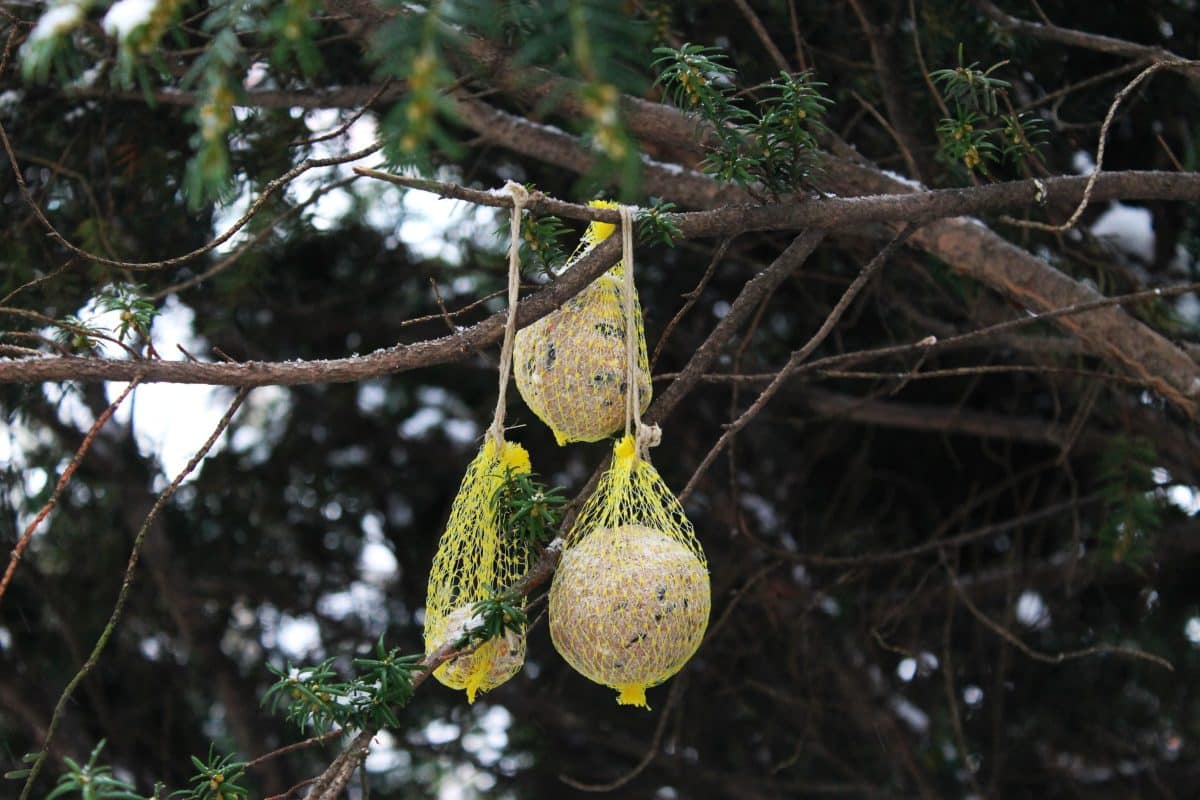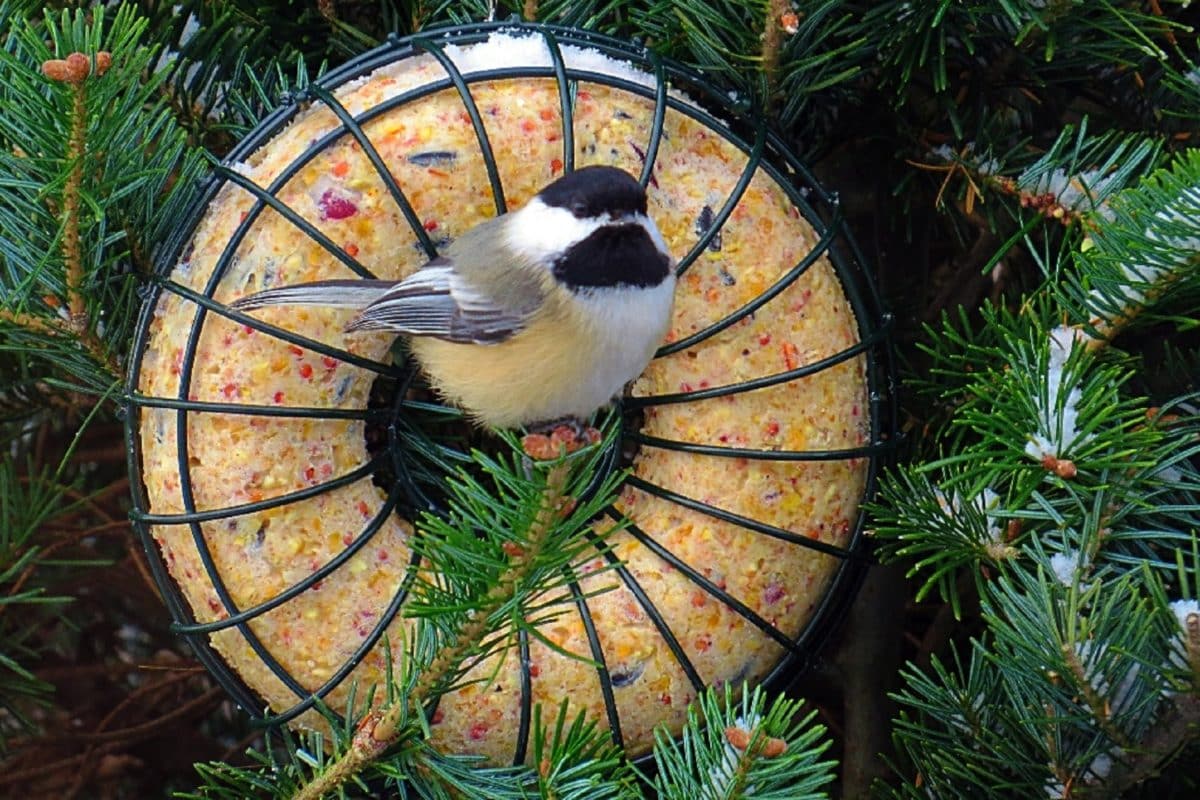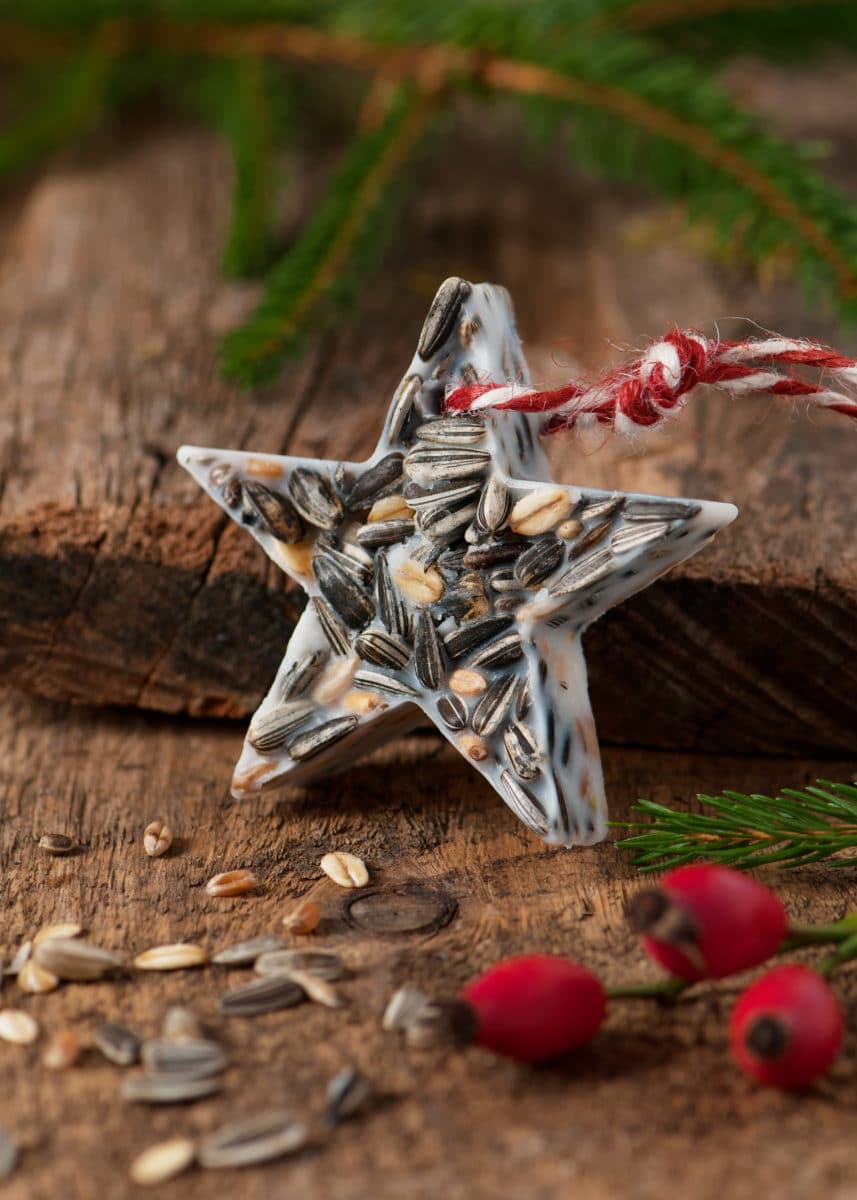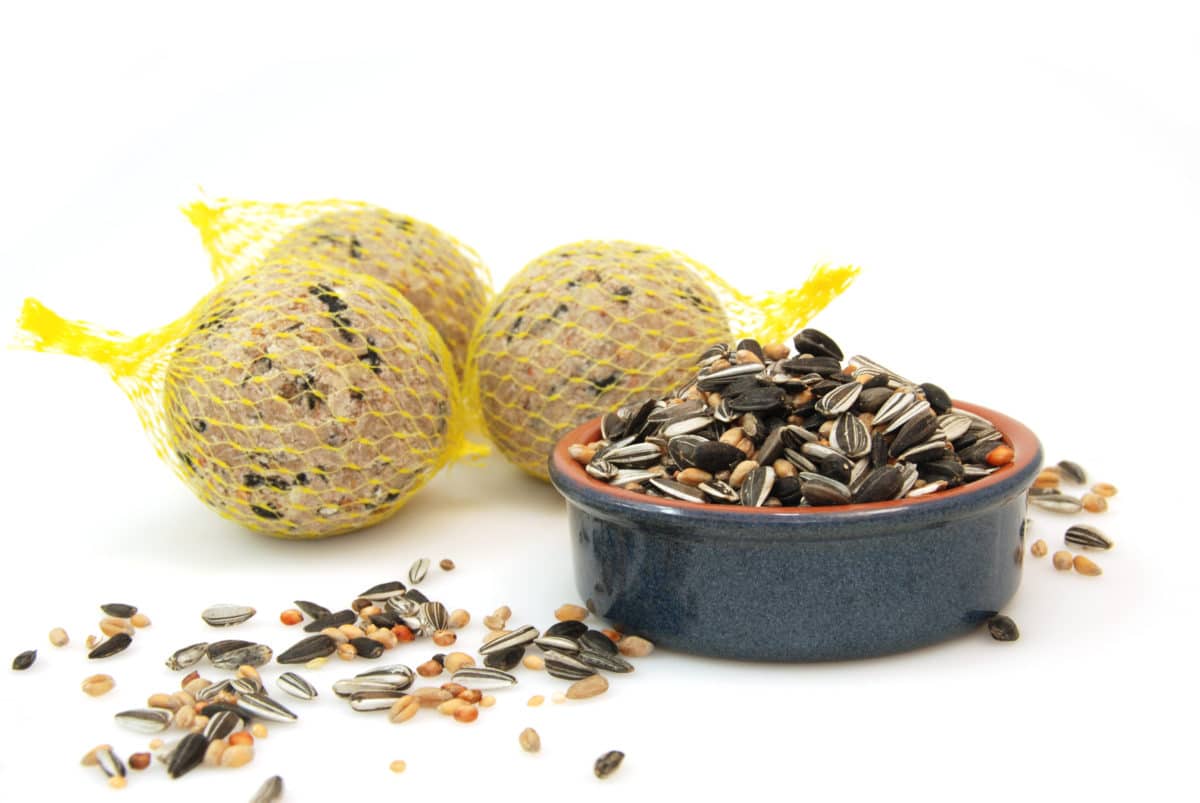I awake on winter mornings at precisely 6:00 am. I know this because the resident turkey flock begins fussing and calling every day at this exact time. In the early dawn light, if I am very lucky, I can just barely see them as they balance precariously on the thin branches of the tall pines before each in turn spreads its wings and floats gracefully down to the snow-covered ground. They know where breakfast is being served: a generous meal of cracked corn awaits at my neighbor’s feeding station.
A snowy winter’s day brings with it a constant parade of hungry visitors, and over the years I have taken great delight in serving up a tempting treat to please each avian palate. Among my guests are seed eaters, fruit eaters, carnivores and strict vegetarians. A variety of offerings is best, placed in an area with plenty of safe cover for them and with an open viewing area for you to enjoy the activity. A squirrel baffle is a necessity!
In choosing my menu I consulted several sources, and I selected from them the most nutritious and high energy ingredients—seeds and fats. The fats are rendered to form a stable matrix that, when cooled, shape solidly into cakes that contain the various seeds, nuts and fruits so essential to the winter birds’ diet.
To make bird cakes I begin by rendering a large hunk of beef suet. The act of rendering requires slowly heating the fat until it is completely liquid, then the solids remaining are strained away.
You want the fat to be perfectly clear. This will keep your cake from becoming rancid. As the liquid fat cools, you may add your nutrient-rich foods. This soft batter is then poured into molds.
These can be as simple as a rectangular baking dish or may be a more decorative bell or donut-shaped mold. Alternatively, the batter can be spread into holes drilled into a log or pushed into a wire suet feeder, either of which may be suspended from a branch. Suspending bells, balls and other molded shapes requires a hole to be poked into each cake for a ribbon or twine.
The recipes that follow are examples to be adapted as needed. What will work for you and your birds will depend not only on your sense of the aesthetic, but on the species you plan to attract and the safe cover you provide at your feeding station.



Did you know?
• Birds have no teeth. They need to ingest grit, which is lodged in the crop or gizzard to help them grind food particles into digestible bits. Some recipes provide this by incorporating small amounts of fine sand into their suet cakes. But if you prefer not to add this, birds will pick up the grit they need elsewhere.
• Most birds are not sensitive to “sweet.” The following recipes include sweetening agents, which I have left in to add body, texture or stabilization to the “dough.” You may experiment with lesser amounts, or leave them out all together. Ingredients such as breadcrumbs, donuts, crackers and sugar add empty calories. Try substituting corn meal, cracked corn, rolled oats, nut meats and mixed bird seed.
• Peanut butter is a perfect addition to your bird cake. It contains fats and protein in a stable matrix, which does not get rancid. Rancidity is the oxidation which occurs when impurities, such as bits of meat and gristle, are not strained out of your fat. They remain in stored bacon grease and beef suet and will perfume your refrigerator. The birds don’t mind, but YOU might.
• Avoid fresh fruits, especially during winter temperatures that alternate between freezing and thawing. These are subject to rot and fermentation. In short, they spoil. Dried fruits are “in”; and the variety is limited only by your imagination. A dehydrator allows you to incorporate ripe berries, apples, cranberries, and cherries into your cakes: a true sharing of the harvest! ![]()
